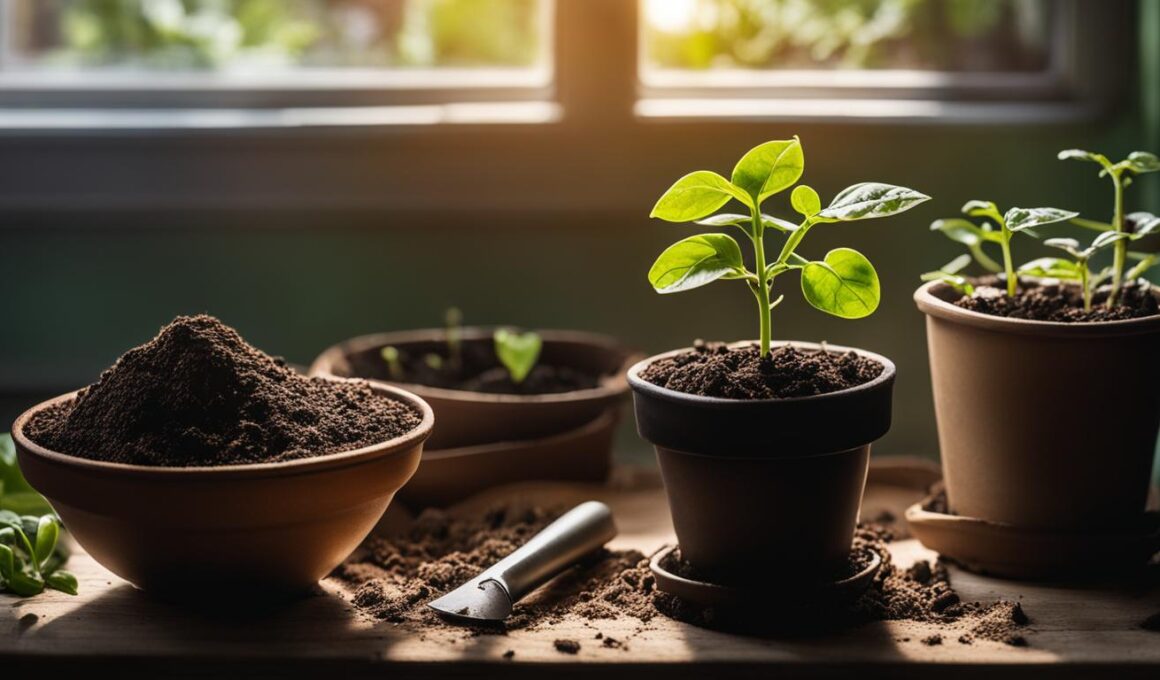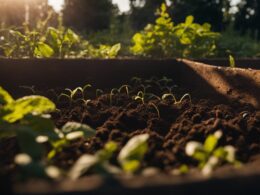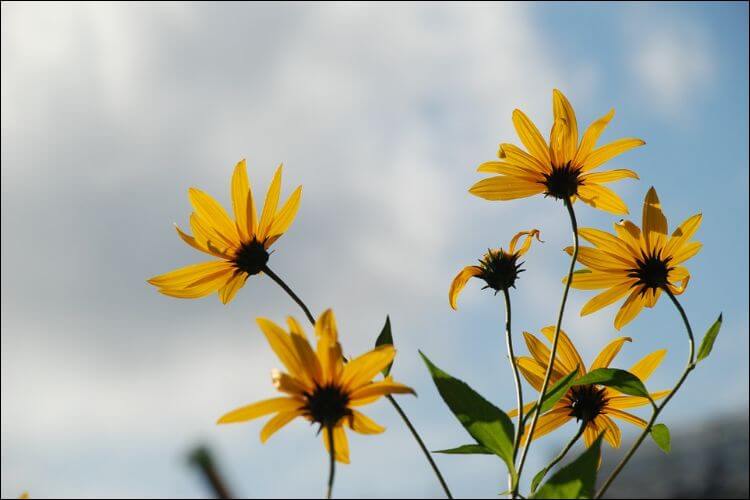Green beans are a popular and easy-to-grow crop that can be started indoors before transplanting them to the garden. Starting green bean seeds indoors allows you to get a head start on the growing season and ensures that the plants are well-established before being exposed to outdoor conditions. In this section, we will provide you with all the information you need to know about when and how to start green bean seeds indoors.
Post Summary
- Starting green bean seeds indoors gives you a head start on the growing season.
- Green beans can be easily grown indoors and then transplanted to the garden.
- Indoor starting ensures the plants are well-established before facing outdoor conditions.
- Follow our guide to learn when and how to start green bean seeds indoors.
- Enjoy a successful harvest of fresh homegrown green beans.
Types of Green Beans: Bush Beans vs. Pole Beans
When it comes to growing green beans, there are two main types to choose from: bush beans and pole beans. Understanding the differences between these two varieties will help you make the right choice for your garden or container.
Bush Beans:
Bush beans are compact plants that grow in a bush-like form, reaching a height of about 1-2 feet. They don’t require any additional support or trellising, making them a great option for small gardens or containers. Bush beans tend to produce a concentrated harvest over a shorter period of time, making them ideal for gardeners looking for a bountiful harvest all at once. Some popular varieties of bush beans include Blue Lake and Provider.
Pole Beans:
Pole beans, on the other hand, are climbing vines that require some kind of support structure to grow on, such as a trellis, bean teepee, or stakes. These plants can reach heights of 6-10 feet or more, making them a great option for vertical gardening and maximizing space. Unlike bush beans, pole beans continue to produce throughout the growing season, resulting in a longer harvest period. Some popular varieties of pole beans include Kentucky Wonder and Scarlet Runner.
Differences at a Glance:
| Characteristic | Bush Beans | Pole Beans |
|---|---|---|
| Growth Habit | Compact, bush-like | Climbing vines |
| Support | Do not require additional support | Require trellis or support structure |
| Height | 1-2 feet | 6-10 feet or more |
| Harvest | Concentrated harvest over a shorter period | Continued production throughout the season |
| Popular Varieties | Blue Lake, Provider | Kentucky Wonder, Scarlet Runner |
Now that you have a better understanding of the differences between bush beans and pole beans, you can choose the variety that best suits your growing space and preferences. Whichever type you choose, both bush beans and pole beans offer a delicious and nutritious addition to your garden.
Growing Conditions for Green Beans
When it comes to growing green beans, providing the right conditions is crucial for a successful harvest. Green beans thrive in full sun, so choose a location in your garden that receives at least 6 to 8 hours of sunlight per day. While they can tolerate some shade, it’s best to ensure they get as much sunlight as possible to maximize their yield.
In terms of soil, green beans prefer well-drained soil that is consistently moist but not waterlogged. It’s important to avoid letting the soil dry out or become too saturated, as this can affect the health and growth of the plants. Before planting, make sure to prepare the soil by removing any weeds or rocks and incorporating organic matter, such as compost or well-rotted manure, to improve the soil’s fertility and drainage.
One unique aspect of green beans is their ability to fix nitrogen from the atmosphere, which means they don’t require much additional nitrogen fertilizer. In fact, excessive nitrogen can actually lead to more foliage growth and fewer beans. Instead, focus on providing a balanced fertilizer that contains phosphorus and potassium to support overall plant health and fruit production.
Ideal Growing Conditions for Green Beans
| Growing Condition | Ideal Range |
|---|---|
| Sunlight | 6 to 8 hours per day |
| Soil | Well-drained, consistently moist |
| Fertilizer | Balance of phosphorus and potassium |
By providing the ideal growing conditions for green beans, you’ll give your plants the best chance for healthy growth and abundant harvest. Remember to monitor the soil moisture regularly to ensure it stays within the desired range. With proper care and attention, you’ll be rewarded with delicious and nutritious green beans straight from your garden.
How to Start Green Bean Seeds Indoors
Starting green bean seeds indoors can be a challenging but rewarding endeavor. While green beans prefer to be directly sown in the garden, starting them indoors can give you a head start on the growing season. Here are the steps to successfully start green bean seeds indoors:
Materials Needed:
- Large containers or seed trays
- High-quality potting soil
- Green bean seeds
- Filtered or de-chlorinated water
- Grow lights or a sunny windowsill
Step 1: Soak the Seeds
Before planting the green bean seeds, soak them in filtered or de-chlorinated water for about 6-8 hours. This will help speed up germination and improve seedling vigor.
Step 2: Prepare the Containers
Fill the large containers or seed trays with high-quality potting soil. Make sure the containers have drainage holes to prevent waterlogging. Moisten the soil before planting.
Step 3: Plant the Seeds
Plant the soaked green bean seeds about 1 inch deep into the pre-moistened soil. Sow 2-3 seeds per container, spacing them evenly.
Step 4: Provide Ideal Growing Conditions
Place the containers in a warm location, ideally with temperatures between 70-80°F (21-27°C). Provide sufficient light by placing them under grow lights or in a sunny windowsill. Green beans require at least 6-8 hours of direct sunlight per day.
Water the soil regularly to keep it consistently moist, but avoid overwatering. Check the moisture level by gently inserting your finger into the soil. If it feels dry about an inch below the surface, it’s time to water.
Step 5: Transplanting Outdoors
Once the danger of frost has passed and the seedlings are several inches tall with a good root system, they can be transplanted outdoors. Harden them off gradually by exposing them to outdoor conditions for a few hours each day, increasing the duration over the course of a week.
When planting outdoors, choose a sunny spot with well-drained soil. Dig holes that are slightly larger than the root balls and gently transplant the seedlings, being careful not to disturb the roots.
With proper care and attention, your green bean seedlings will grow into healthy plants that will produce a bountiful harvest of delicious green beans.
Conclusion
In conclusion, starting green bean seeds indoors can be a rewarding and practical method for ensuring a successful harvest. By familiarizing yourself with the different types of green beans, such as bush beans and pole beans, you can choose the variety that best suits your growing space.
Remember to provide your green beans with optimal growing conditions, including full sun exposure and well-drained soil. While they are not heavy feeders, maintaining consistent moisture throughout the germination and growing process is essential for their overall health and productivity.
When starting green bean seeds indoors, it’s important to be mindful of the potential challenges associated with transplanting. If you decide to proceed, follow the recommended timeline and provide adequate sunlight and protection from pests until the seedlings are established.
With proper care and attention, you’ll soon be enjoying a bountiful harvest of fresh, homegrown green beans. So why wait? Get started on your indoor green bean adventure and look forward to savoring the delicious rewards of your efforts.
FAQ
Can green beans be started indoors?
Yes, green beans can be started indoors before transplanting them to the garden.
What are the types of green beans?
There are two main types of green beans: bush beans and pole beans.
Do green beans need a lot of sunlight?
Yes, green beans thrive in full sun and require at least 6 to 8 hours of sunlight per day.
How deep should I plant green bean seeds indoors?
Green bean seeds should be planted about 1 inch deep in pre-moistened soil when starting them indoors.
When should I start green bean seeds indoors?
It is recommended to start green bean seeds indoors only 3 to 4 weeks before they will be planted outside.
Do green beans need a lot of fertilizer?
No, green beans are not heavy feeders and don’t require much additional fertilizer.
Can green bean seedlings be transplanted?
Green bean seedlings don’t like to be transplanted and may not survive the process.
How should I protect green bean seedlings?
Green bean seedlings should be protected from pests until they are several inches tall.
Can the same indoor seed starting method for cucumbers be used for green beans?
Yes, the same indoor seed starting method for cucumbers can be used for green beans. When starting cucumber seeds indoors, you can also start green bean seeds using the same technique. Both plants require warm temperatures and a moist environment to germinate. Happy gardening!









